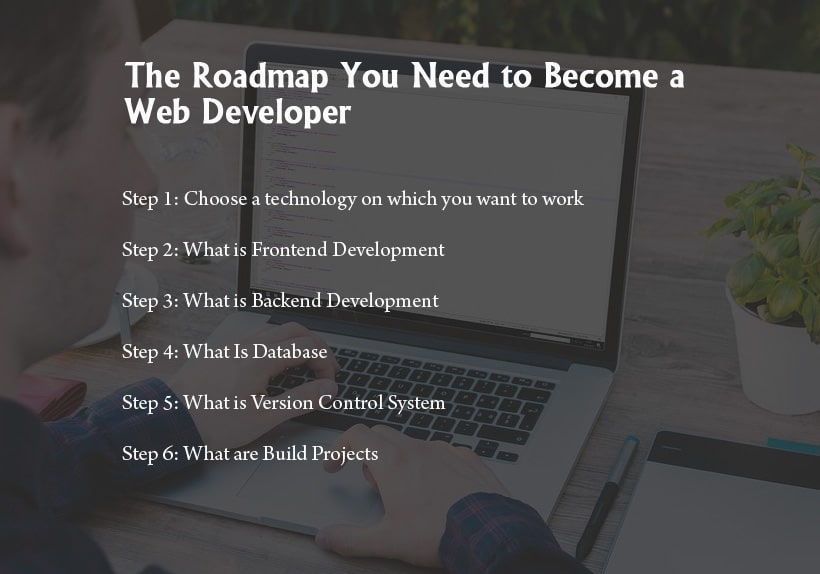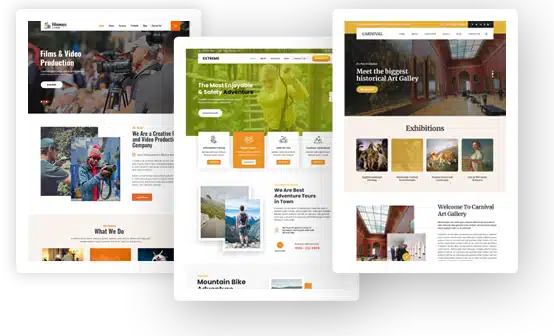The Roadmap You Need to Become a Web Developer in 2024

What is A Web Development Roadmap?
A web development roadmap is a plan that outlines the steps needed to develop a website. The Roadmap typically includes a timeline, milestones, and deliverables.
A roadmap creation at the beginning of a project is essential to ensure that all stakeholders know the project’s goals and objectives. The Roadmap can also be used as a project management tool, helping keep the project on track and on budget.
While the exact steps involved in developing a website will vary depending on the project’s scope and requirements, some common steps are typically included in most web development roadmaps.
These steps include: gathering requirements, designing the website, programming the website, testing the website, and launching the website. By following a well-designed roadmap, you can ensure that your website project is completed efficiently and effectively.
Step 1: Choose a technology on which you want to work
Are you interested in a career in web development? There are a few things you need to know:
- It would help if you had a solid understanding of HTML, CSS, and JavaScript. These are the three essential technologies for any web developer.
- You need to be familiar with the Web Development Roadmap. This guide outlines the steps you need to take to become a successful web developer.
- You need to choose a technology on which you want to focus.
There are many different technologies used in web development, so choosing the one you’re passionate about is essential. Once you’ve chosen your technology, it’s time to start learning!
There are plenty of resources available online, so make sure to do your research before getting started. With a little hard work and dedication, you can be on your way to a successful career in web development!
1. MERN technologies
2. MEAN technologies
Step 2: What is Frontend Development
Front-end development refers to building a web application’s user interface and interactions.
This includes everything. From the layout and design of the page to the functionality of the form elements and buttons. A front-end developer must understand web design and user experience to create a compelling and enjoyable user interface.
An essential skill for a front-end developer is a good understanding of HTML, CSS, and JavaScript. HTML helps structure a web page’s content, CSS is used to style that content, and JavaScript is used to add interactivity.
A front-end developer needs to be able to hand-code all of these elements from scratch and understand how to use various front-end frameworks and libraries.
If you’re interested in becoming a front-end developer, the best place to start is by familiarizing yourself with the Web Development Roadmap. It will give you a good overview of all the skills you need to learn and the order in which you should learn them.
Once you understand the basics, you can start exploring more advanced concepts and technologies.
Step 3: What is Backend Development
Backend development is building and maintaining a website’s back end or server-side. It includes the server, application, and database where all the site’s data is stored.
Backend developers use a variety of programming languages to create the necessary code for a website to function. They also work closely with front-end developers to ensure that the two sides of a website are working together seamlessly.
While backend development can be complex, it is essential to any successful website. By understanding the basics of backend development, you can better understand how your website works and how to make it more efficient.
Step 4: What Is Database
A database is a group of data that computers can access. The term database can refer to the entire set of data or individual data collections.
Web development roadmap generally contains three databases: relational, object-oriented, and NoSQL. Each type has its strengths and weaknesses, and each is suitable for different types of applications.
- Relational databases are the most common type of database, and they are well suited for applications where data is organized into tables.
- Object-oriented databases are less common, but they are well suited for applications where data is organized into objects.
- NoSQL databases are the least common type, but they are well suited for applications where data is not easily organized into tables or objects.
Step 5: What is Version Control System
A version control system (VCS) is software that tracks and manages file changes. Developers use VCS tools to maintain different versions of code, which can be helpful when managing coding projects or tracking changes over time.
Web developers can use VCS tools like Git to keep track of their codebase updates and collaborate with other developers on shared projects.
VCS tools can also create “snapshots” of code at different points, which can help debug purposes or revert to previous versions of code.
Overall, VCS tools are an essential part of the web development workflow and can be used to manage codebase changes effectively.
Step 6: What are Build Projects
The Web Development Roadmap is a set of tools, best practices, and resources to help you plan, build, and deploy high-quality web applications.
Build projects culminate all your hard work up to this point. You’ll deploy these real-world applications to the web and share them with the world.
Conclusion
By following the steps in the Roadmap, you’ll have everything you need to build professional, robust, and user-friendly projects. So what are you waiting for? Get started today!

